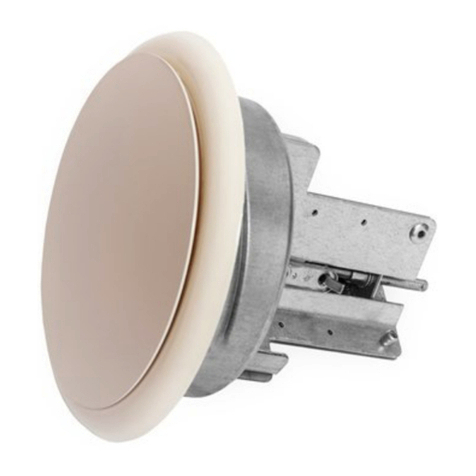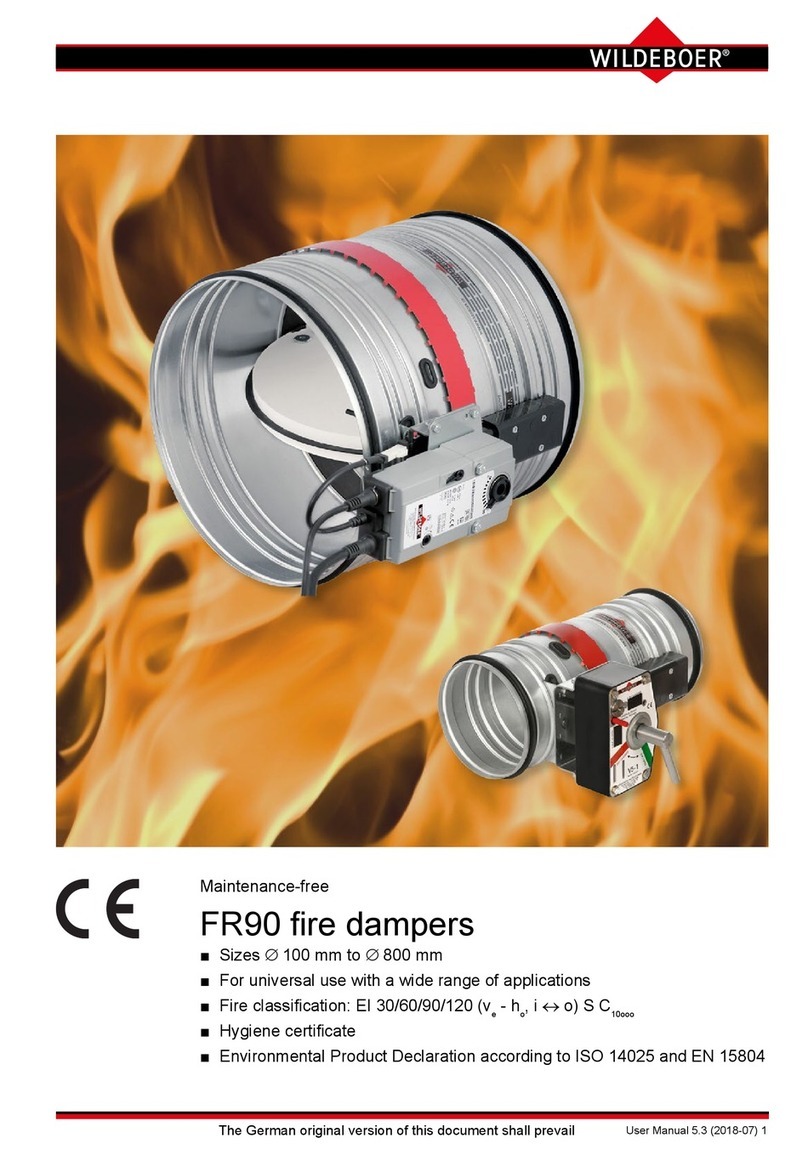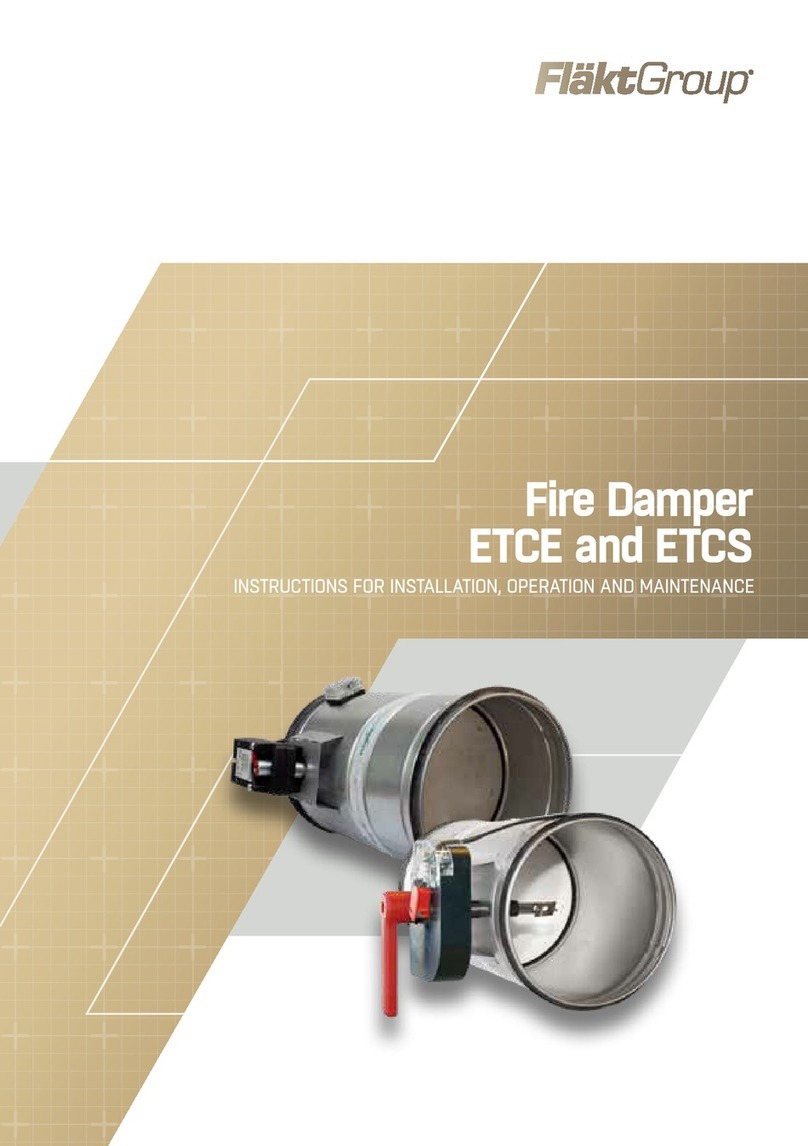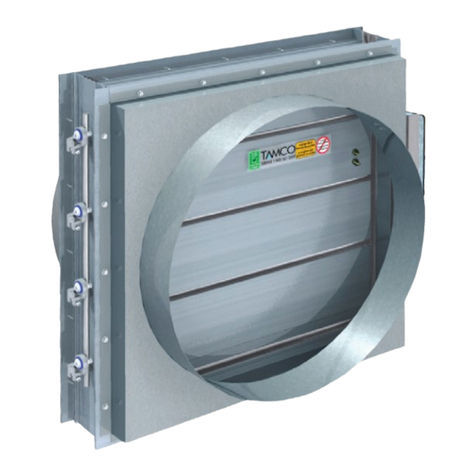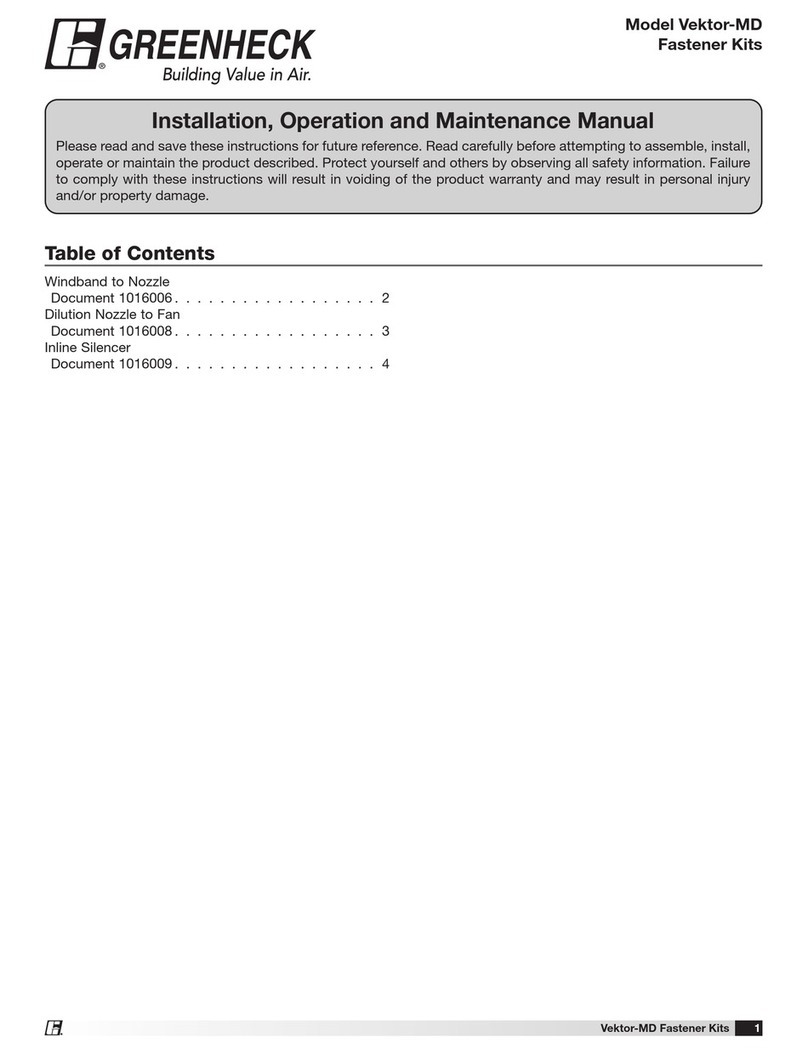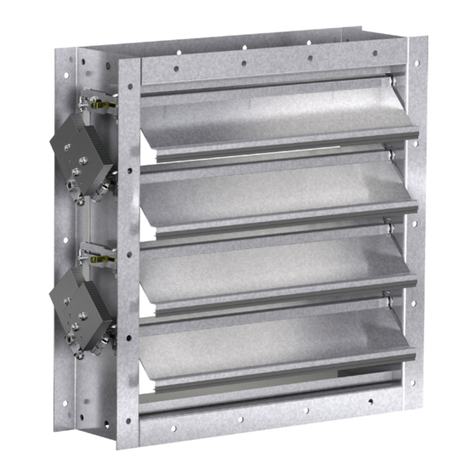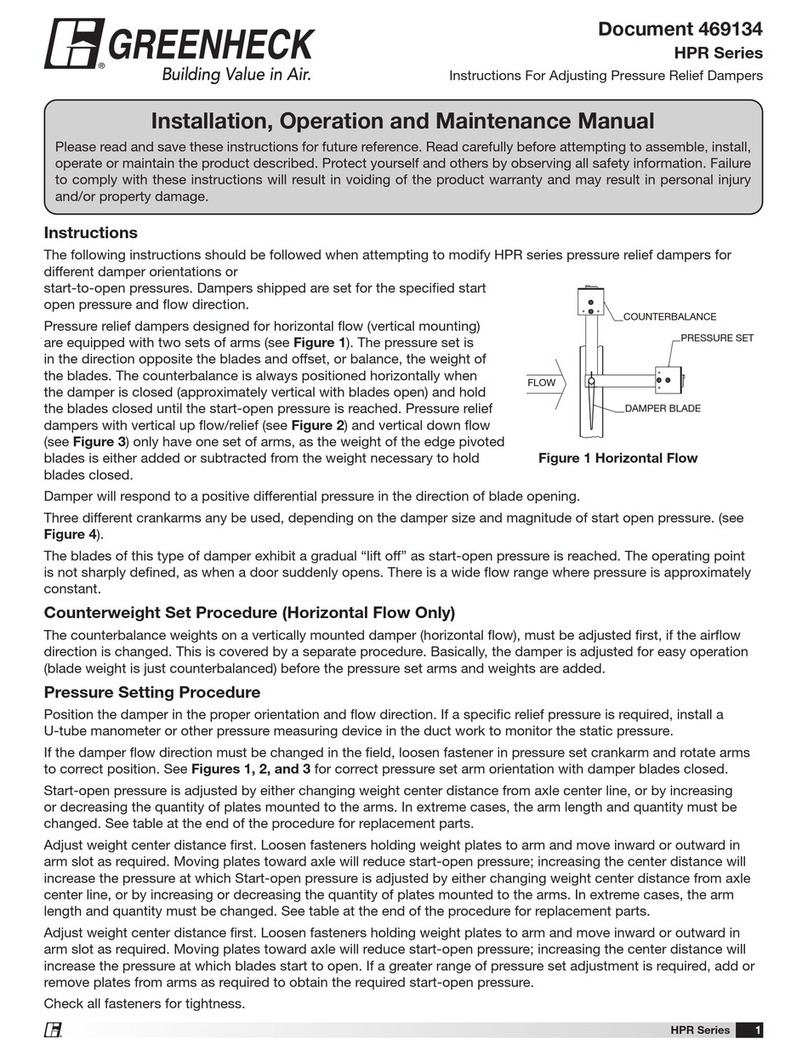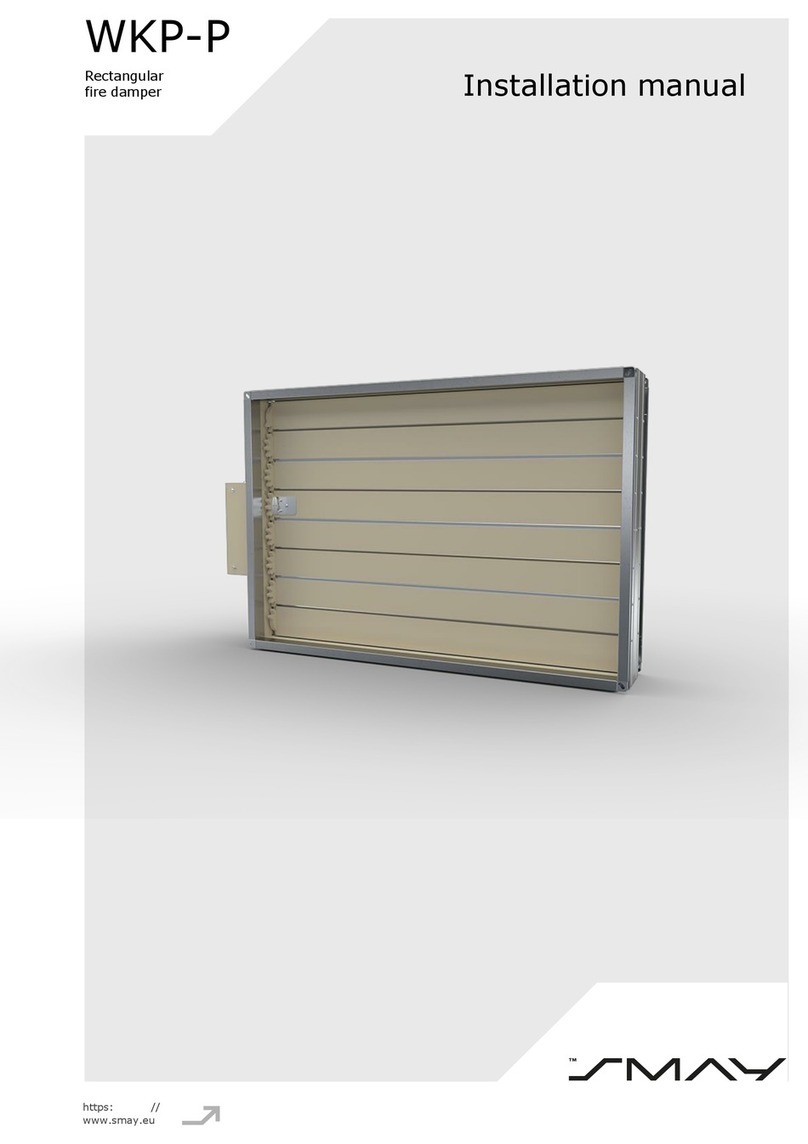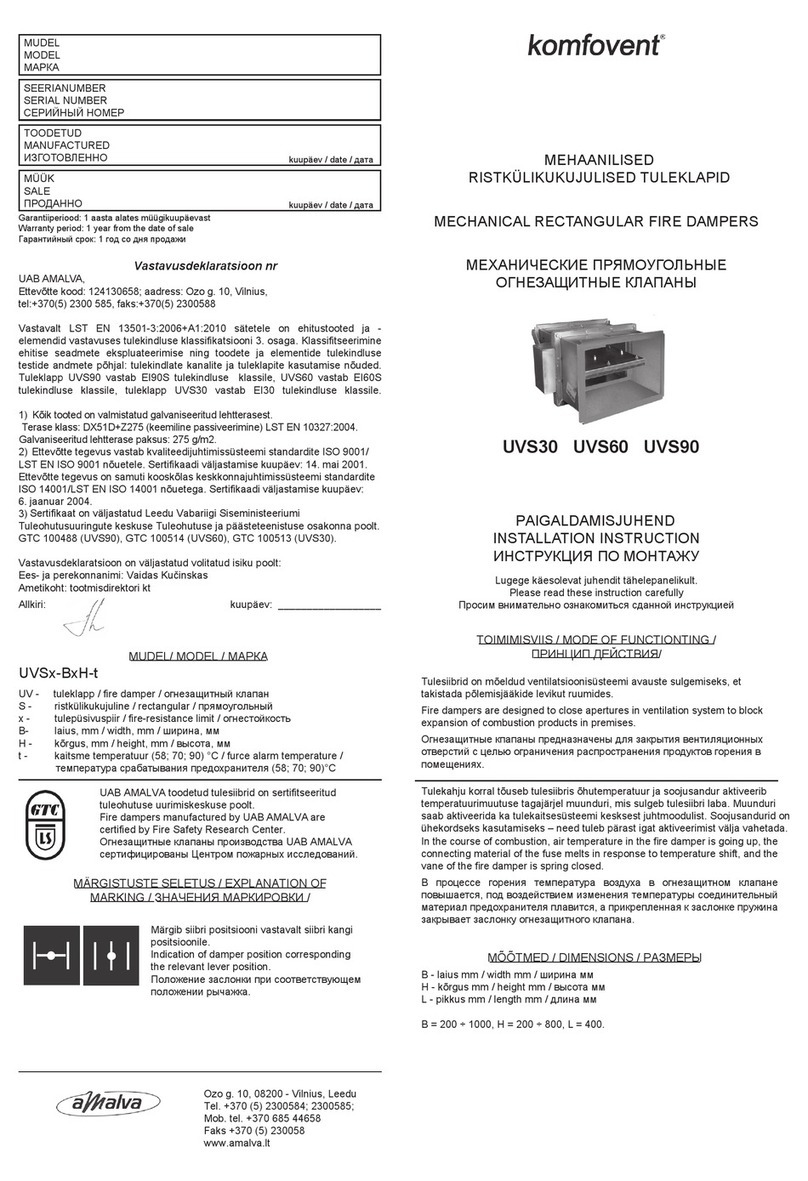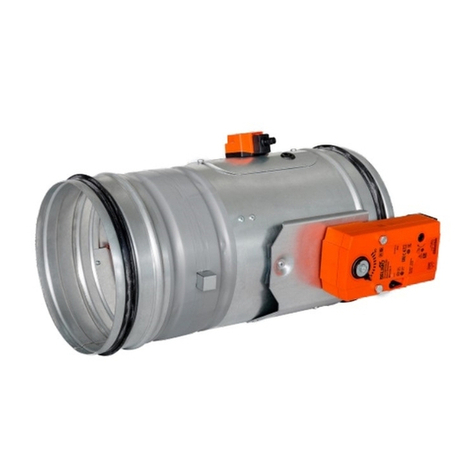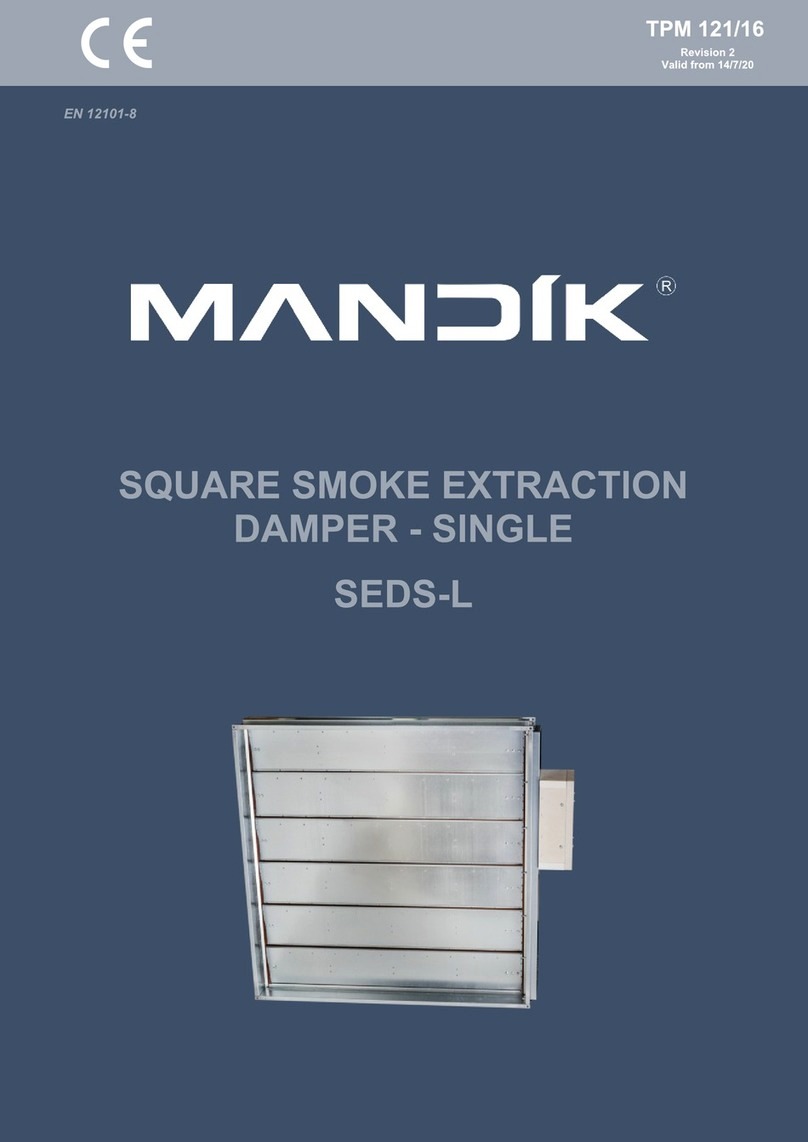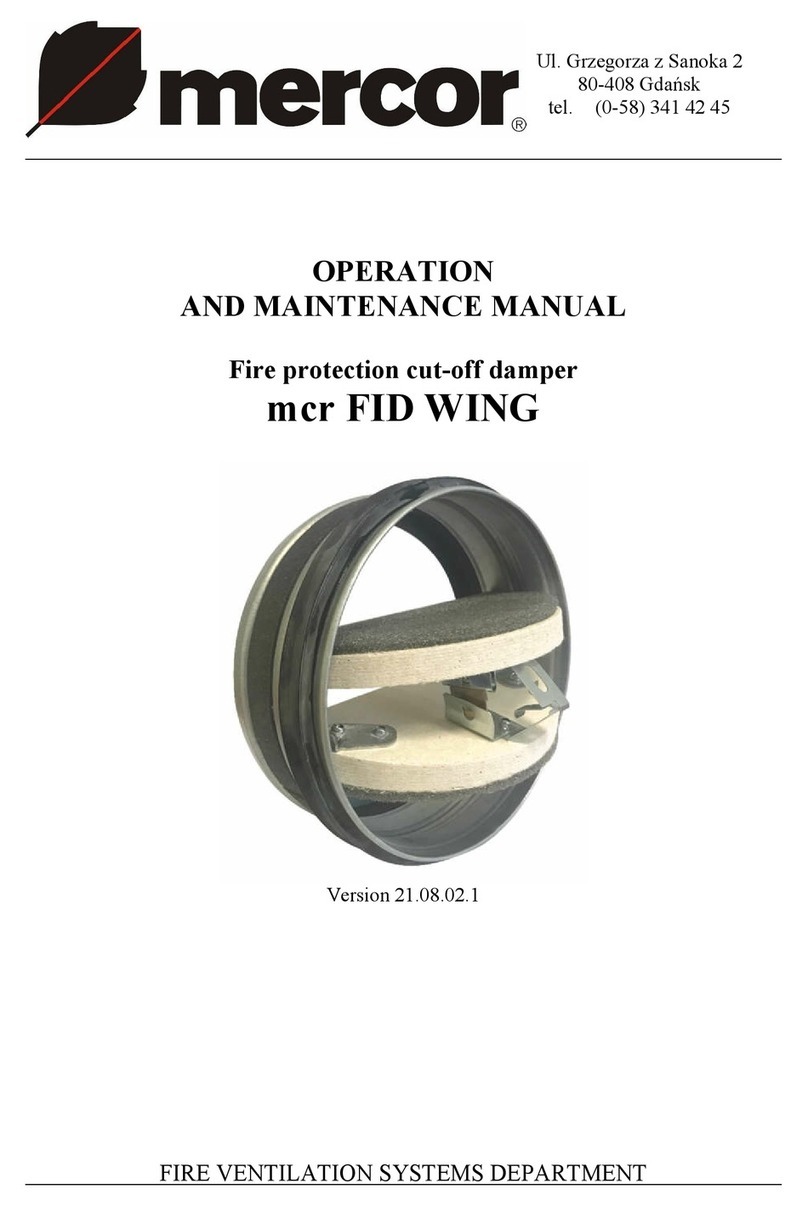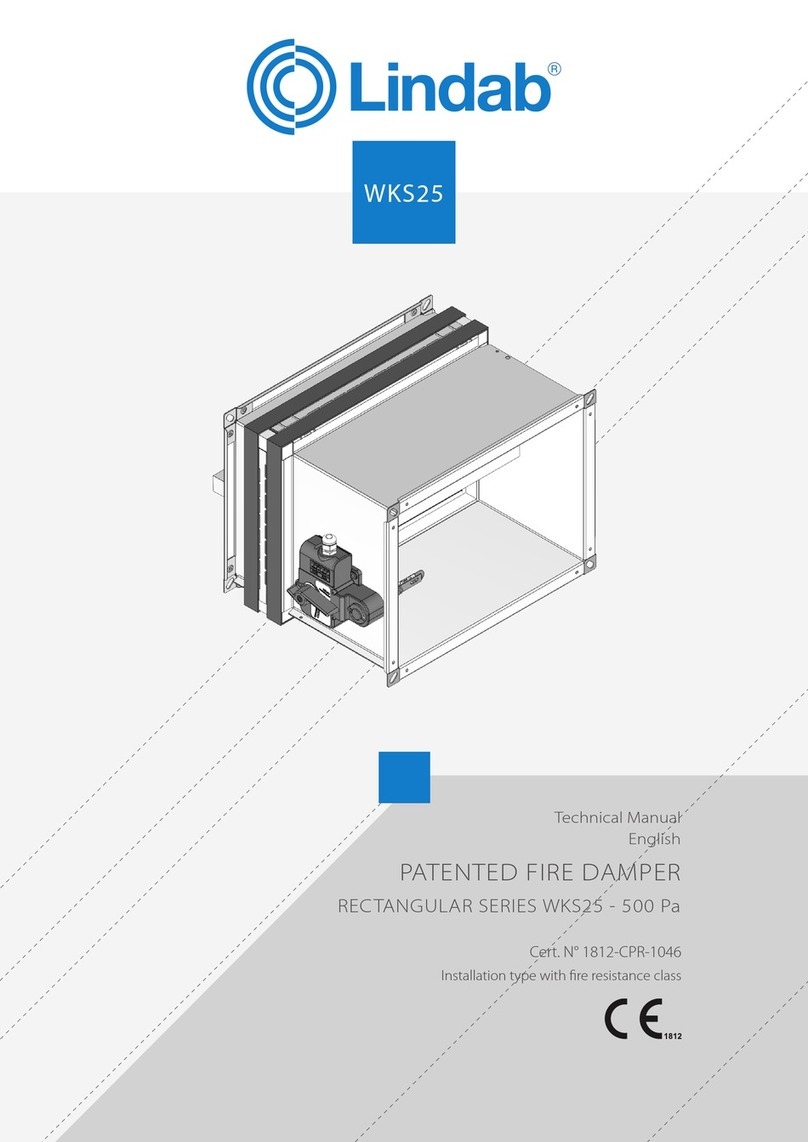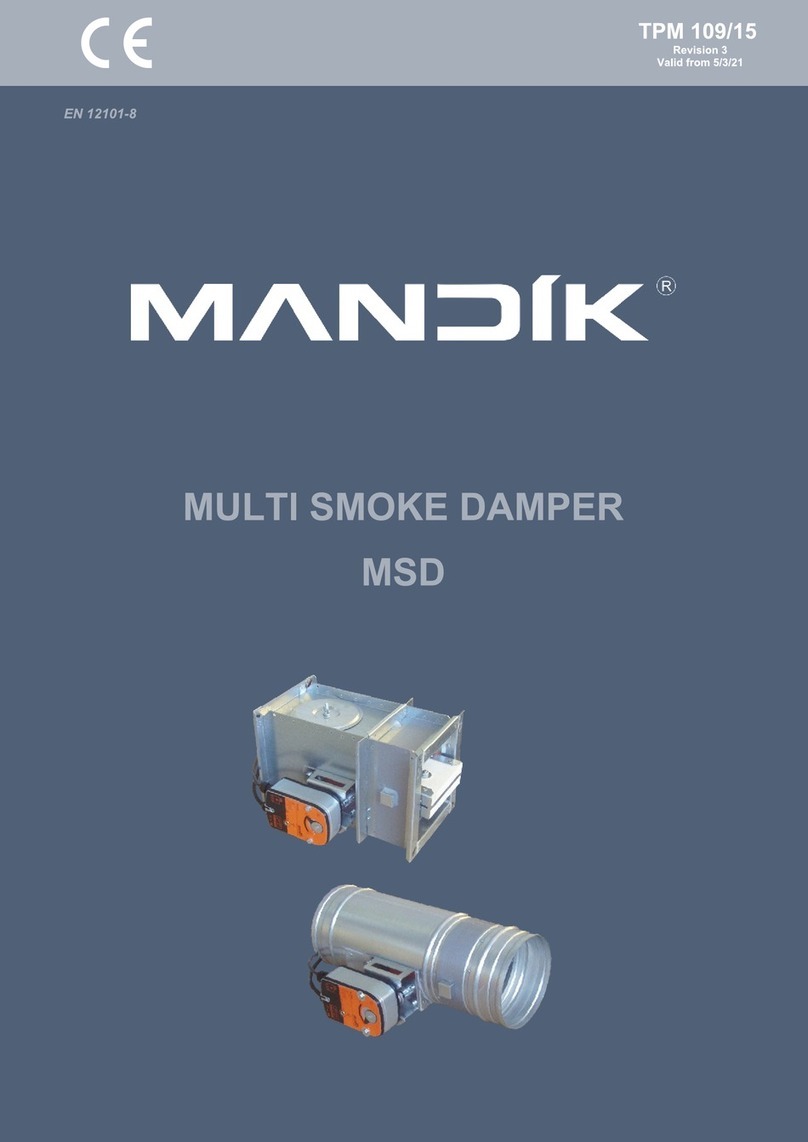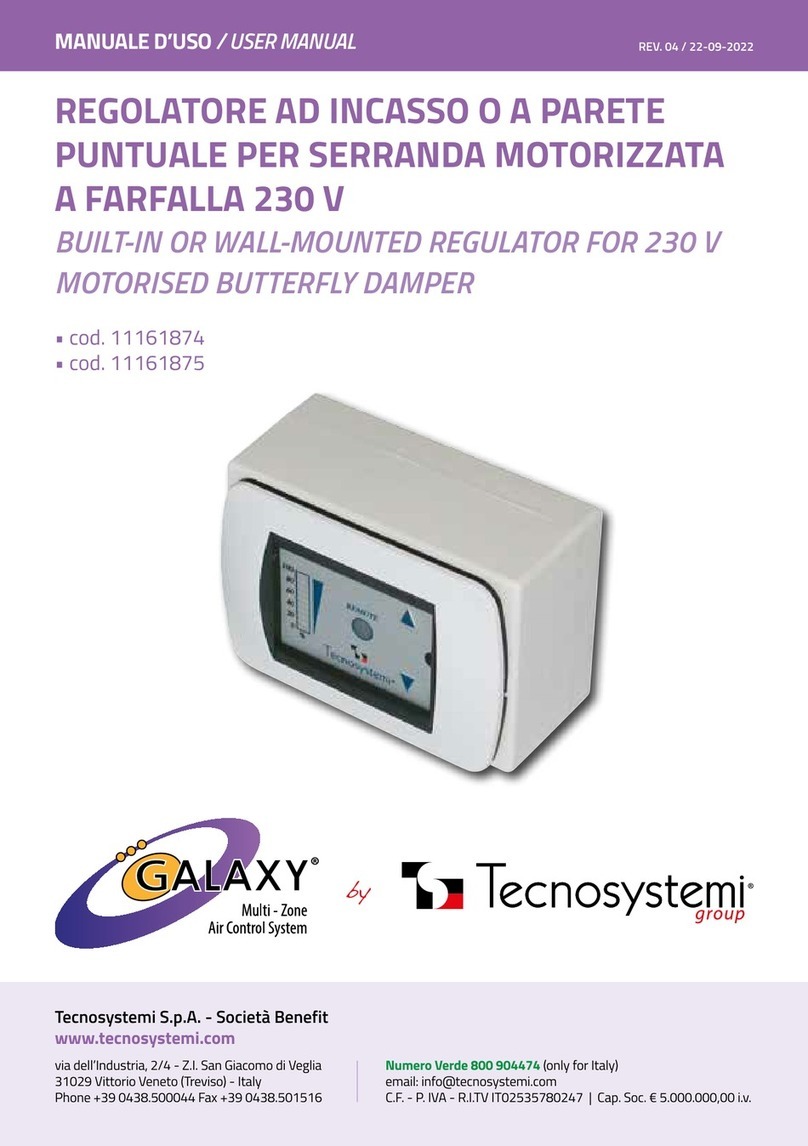
BSK
Fire-resisting dampers
Use
A re safety damper prevents the spread
of smoke and re via ventilation and air
conditioning system ducts in the event
of re.
Such units are installed in air ducts
located in re-separation walls and ceil-
ings. The re resistance rating according to
EN 1366-2 is EIS 60 or EIS 120.
Design
The BSK series dampers are made in the general-purpose industrial ver-
sion with a minimized variety of hardware components using low-alloy
galvanized steel. The ap is made of re-resistant material (vermiculite)
with thermoexpansive reproof sealing.
The duct design implies two connection ports for integration into a ven-
tilation duct (duct system).
Control and modications
Depending on the design variant the BSK series dampers are equipped
with:
MECHANICAL ACTUATING UNIT WITH A THERMAL FUSE AND
ARETURN SPRING
The re safety damper remains open in the protective position. The
damper is set to the operating position upon the thermal fuse break-
down resulting from a temperature increase. In the event of re, the
fusible element will melt upon the temperature reaching 72 °C and the
spring will set the ap to the closed position.
ELECTRIC ACTUATOR WITH A BUILT-IN RETURN SPRING AND
ATHERMALLY SENSITIVE BREAKER
Setting the damper to operating position (direct fire contact):
remotely, via electric actuator. The damper can be set to the operat-
ing or protective position either remotely via a control panel or man-
ually using the manual cocking handle which is always included
in the standard delivery set of the electric actuator. In case of the
remote control panel failure, the back-up thermal breaker interrupts
the power supply to the electric actuator and the return spring sets
the damper to the operating position. Emergency damper actuation:
The damper ap is set to the protective position automatically (damper
unaffected by re). The electric actuator remains energized at all times.
In case of an emergency actuation (direct re contact): The electric actu-
ator equipped with a return spring is de-energized and the damper ap
is set to the operating position by means of the spring energy. In case
of a power failure not related to re and its subsequent restoration at
the actuator with a return spring, the damper ap returns to aprotec-
tive position.
Mounting
During the re safety damper installation make sure that the release
mechanism and the inspection hole face an easily accessible side of the
wall or ceiling. This will ensure convenient control of the thermally sen-
sitive release mechanism and its internals.
The damper can be embedded into brick or concrete walls with the
appropriate re resistance rating.
Wooden spreader bars should be used to avoid casing deformation
during the installation.
Upon completing the installation remove the wooden spreader bars.
The damper may not be installed:
• Into air ducts and on premises rated explosion and re safety cate-
gory A and B.
• Into air ducts of local intakes for ammable and explosive mixtures.
• Into systems which are do not undergo periodic cleaning pursuant
to the established regulations for prevention of ammable deposit
buildup.
Use of wooden spreader bars
during installation
Recommended damper
positions
Normally open re-resisting
duct damper with a thermal fuse
and a return spring
Normally open re-resisting duct damper
with anelectric actuator, a return spring
anda thermoelectric breaker
blaubergventilatoren.de38
2020 |FIRE SAFETY
FIRE SAFETY DAMPERS
